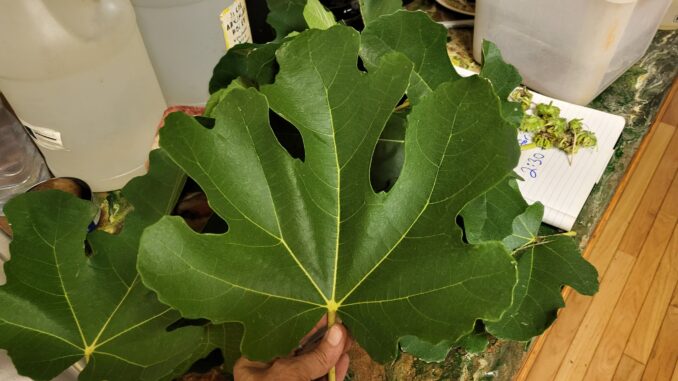
We all have a story of someone being gifted a fig dessert for the holidays, only to regift it to someone else. lol But I have to ask, did they really know how delicious and beneficial figs are? Or did Grandma just really not know how to make it?
I don’t have a good recipe for you yet, mainly because I don’t get enough to harvest of my beautiful fig tree yet to make anything with…yet. lol Peel Jam coming soon though. For now, I get one or two, or maybe even accidentally 4 and they ascend quickly to my belly. 🙂
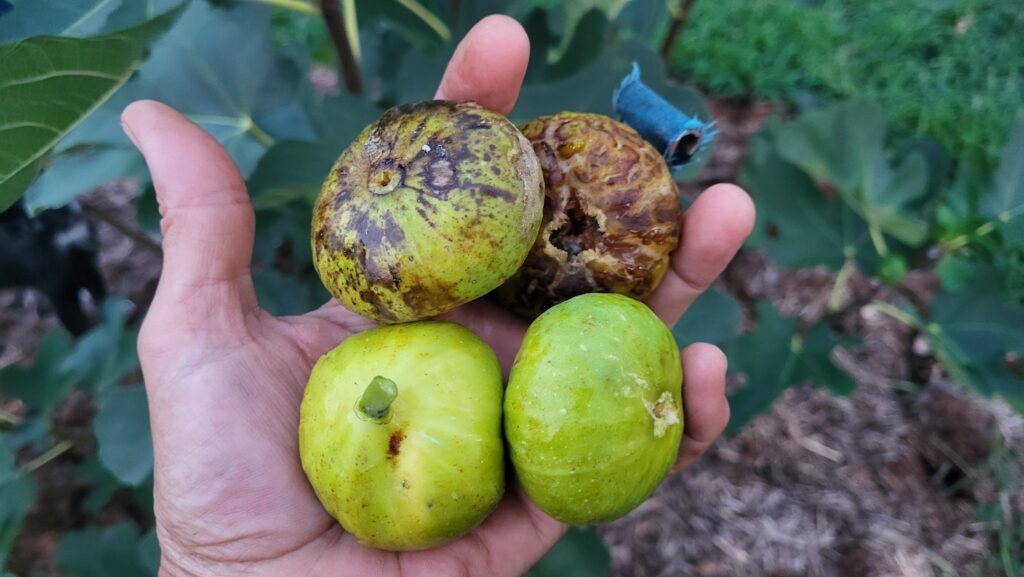
This year has been so rewarding in many ways. While the drought was the toughest time in my gardening or summer life, EVER…several of the bare root and babies trees planted when I landed here in 2020 started to finally produce. After 2 1/2 years of nurturing these babies in extreme conditions, I got to finally eat my first blackberries, raspberries, passionfruit, grapes and the highlight of this post, figs! 🙂
If you’re here, you know I’m a big proponent of making your food your medicine. And one thing I have been finding out after many sleepless nights researching articles on pubmed.gov is that almost every single thing growing that I have found is food or medicine or most of the times, BOTH!!! In fact, as we discussed on the Ochelli Effect Radio Show in our Flower Power series, I have yet to find ANY flower that isn’t beneficial for something and MOST effective against cancer, hiv and other so called incurables, as well as having many important properties, minerals, flavenoids, terpenes, etc. One thing I think every herb, weed and flower I’ve researched is that they are ALL anti inflammatory! And fig is no different! One important point I want to make before I move on to tell you more about fig is that even flowers grown in “grandmas garden,” castle grounds, parks, etc, traditionally planted for their beauty, scent, ease of growth or tradition, are ALL medicinal. This includes many of the “invasive” gardeners and farmers like to complain about, like morning glory, wisteria, mimosa, yucca, blackberry, passionflower and more! Grandmas lilies? Medicine. Grandmas tulips, hollyhocks, roses, peonies, lilacs, forsythia? MEDICINE!
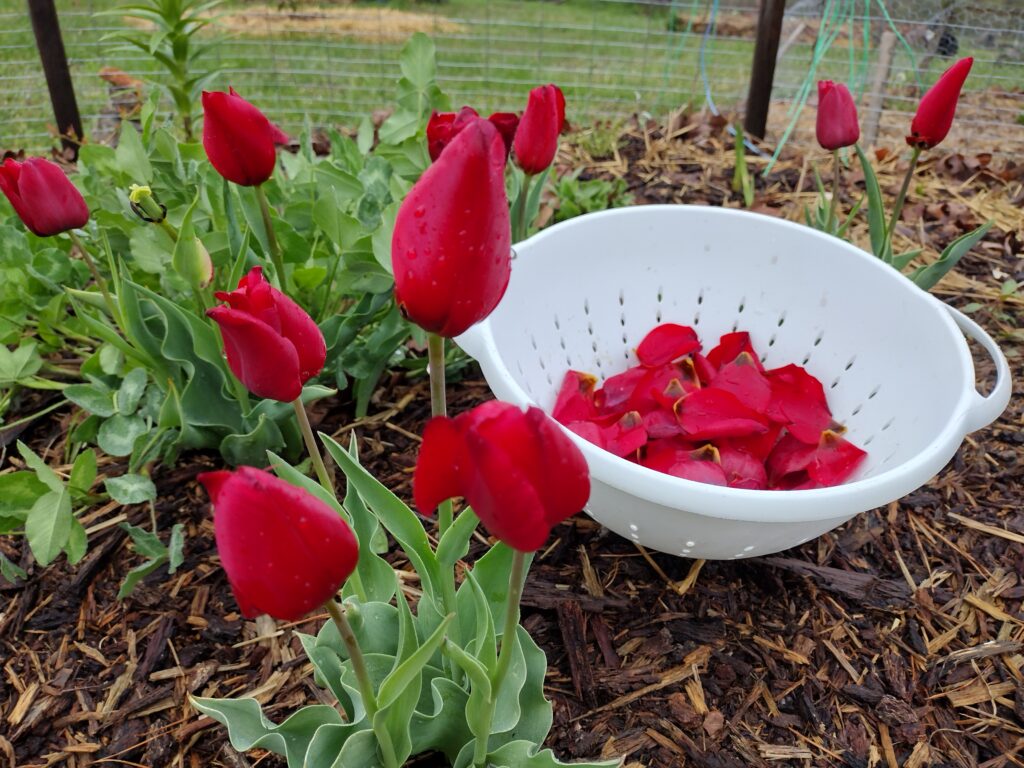
Now that we’ve got that out of the way, let’s focus for a moment on what makes fig so special! And be aware that nothing I say should ever be considered medical advice. Also be sure to fact check anything you discover here to be fully informed on any venture you may consider delving into that you learned here.
While 90% of commercially grown figs in the US are grown in California, and most prefer the warm temperatures of zones 8-10, there are cold hardy varieties that can grow in less temperate regions if protected well in the winter. They are also fun and beautiful in pots that can be taken inside for the winter. Their beautiful thick skinned and deep veined hand like leaves have a pleasant aroma even when near the plant. But be careful if harvesting the leaves. I’ve never seen it before, but according to what I’ve read, SOME people are allergic to latex, which is the white sappy stuff you will find when plucking a leaf and there have been some reports of Phytophotodermatitis and burning caused by touching the sap. However, I’ve also read reports that latex is beneficial? You decide.
THIS IS AN ADDENDUM ADDED AFTER THE ORIGINAL BLOG AND FINDING OUT A PERSONAL FRIEND OF MINE DID IN FACT HAVE AN ALLERGIC REACTION TO THE LATEX CAUSING HER TO MISS WORK! Here is her photo and what she had to say about it:
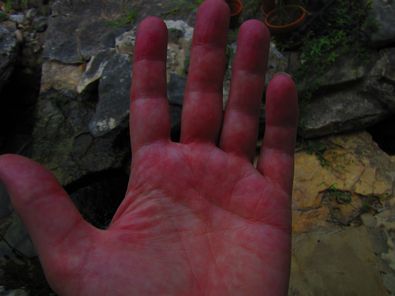
“Beautifully written article! And fig burns are real…my hand after picking 80 pounds a couple years ago and getting covered with sap…painful like a deep sun burn that lasted about 3 days.”
So now that we KNOW that Phytophotodermatitis is REAL, let’s use extra special caution BEFORE diving right in! 🙂
According to literature and peer reviewed studies and journals, the fig and the leaf are both edible and medicinal. In fact using the leaves of fig steps your favorite dolmas recipe up a notch. Some people even use the leaves to wrap and bake or grill their fish, which adds a nice sweet but smokey rich flavor to your favorite recipe. Even others use them to wrap tamales! The fig fruit is high in calcium and potassium, which has been said to improve bone density and has also been used to assist in relieving constipation. Getting back to that sap….some research suggest that it can remove warts and assist in skin conditions like eczema and dermatitis and be effective against HPV related cervical cancer. Again, due your own research before deciding to try anything discussed here.
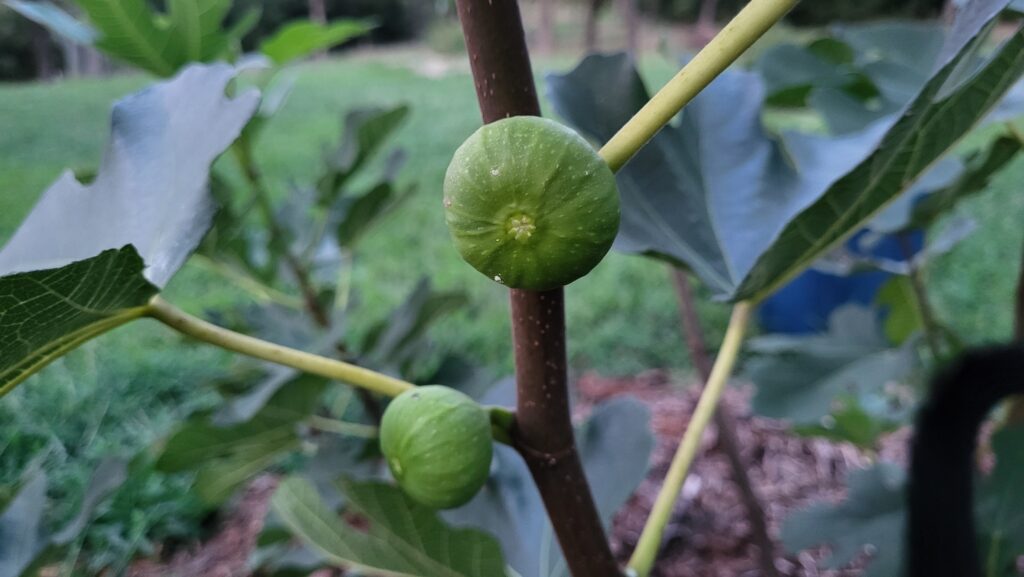
I have been able to find many more reports of the medicinal aspects of the leaves than the fruit itself, so please don’t let this be your only introduction to the fig. But if you can’t see why I dig fig yet, let me tell you how delicious the leaves are in a tea! My favorite way to drink it is in my Sacred Garden Tea, paired with Holy Basil, PassionFlower and a couple other delicious herbs, but the leaves are so delicious, you can just pick them right off your tree and steep as is! No need for sweetener with fig leaves and has such a gentle, warming aroma and flavor that is great by the fire! It also tastes great with lemon if you wanted some extra vitamin c, or ginger. In fact I can’t think of anything it wouldn’t taste great with…except for pizza. That would be weird.
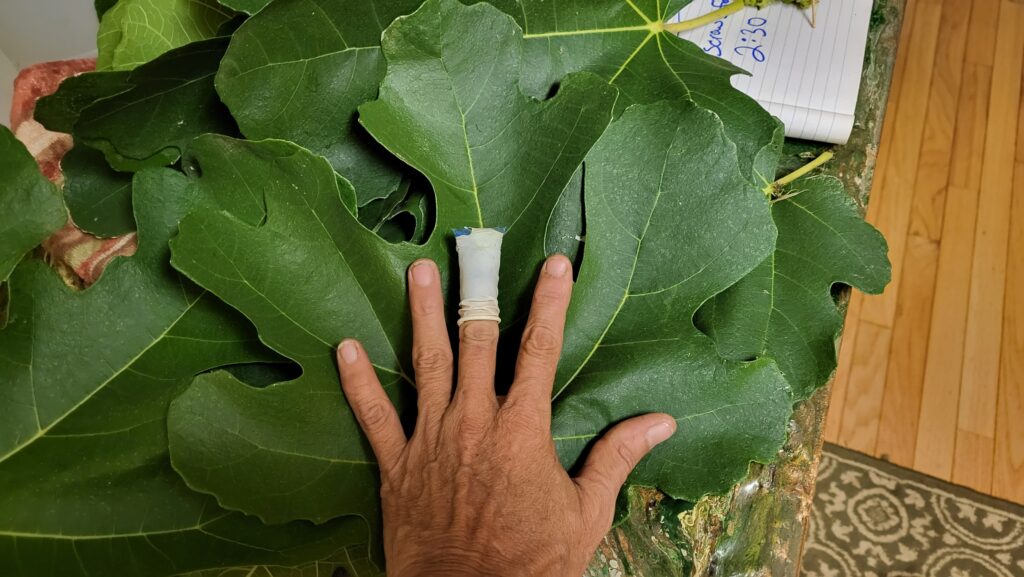
And if the taste and it’s wide availability and low maintenance growing conditions aren’t enough to make this one of your go to teas, what if you knew that it can help boost your cardiovascular health, lower cholesterol and even help control diabetes? While most of the known recent studies have been done with rats, don’t let that discourage you as it has shown promising enough to invite further research and has been used in early medicinal practices by many native cultures for centuries! If modern medicine was so crucial to our survival as a species, how did our ancestors survive the previous thousands of years without big pHARMa? My personal experience and others have mirrored the research found in the studies. It also seems to have a pretty relaxing effect, that almost amounts to a warm hug from a loved one. And when you smell the aroma of your leaves dehydrating permeating the walls of your home in it’s sweetness, you will be hooked! 🙂
There have been human studies on it’s antibacterial qualities that prove it’s efficacy against Enterococcus faecalis and in this report, confirmed the potential of it’s bioactive compounds as an anticancer candidate. The leaves have been found to be rich in potassium, magnesium, phosphorus, copper, and calcium and high in vitamins A, C and B3, so worst case scenario, you are enriching your diet in much needed vitamins and minerals that our modern foods are lacking.
I encourage you to continue your research on whether fig is right for you or not but I hope this helps lead you in the right direction and encourages you to look at this plant at more than just an ingredient in fig newtons. 🙂
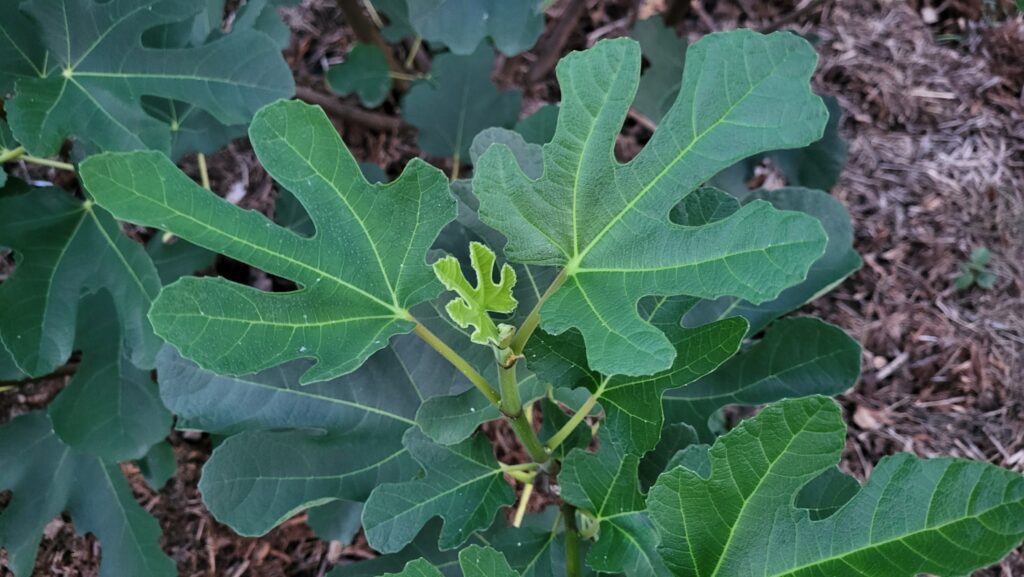
If you are growing fig, I cannot advise you whether to prune or not to prune. I have been pruning mine based on what I’ve learned, but after seeing the most beautiful and abundant healthy fig that has never been pruned with several very tall dead stalks still intact looking beautiful, I may never prune again! 🙂 I usually like to listen to the plant. If you need to prune, go for it. Most traditional gardening “experts” will tell you it should be pruned by half each season, but I don’t know anymore. I think there’s more to gardening than once size fits all!
And if you do want to make a tea or infusion with your fig leaves, keep in mind that you can use fresh or dried, but dried you will only need half the amount as you would fresh. And keep in mind if you are going for it’s medicinal aspects, you might want to consider steeping longer than the traditional 20 minutes. While I will occasionally drink it within an hour of making, I always let my pots of tea steep overnight. Here’s a little tutorial.
Thank you for reading and I hope you start to dig fig as much as I do! 🙂
What are you favorite ways to prepare fig fruit or leaves?

Wow! That was super informative. I think I dig fig too. Thank you.